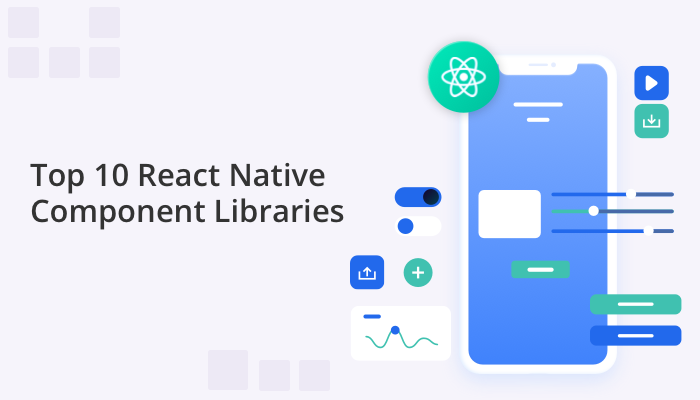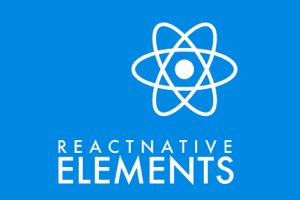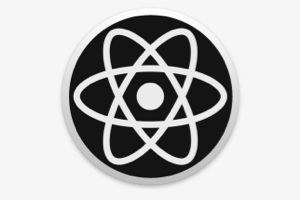
React Native is a popular framework for building mobile apps that run on both iOS and Android. One of the advantages of React Native is the ability to use pre-built components and libraries to speed up the development process and improve the overall look and feel of the app. In this essay, we will explore 10 popular React Native component libraries that developers can use in their next build. These libraries provide a wide range of pre-built, customizable UI components and functionality that can be easily integrated into a React Native app. From UI components, navigation, animations, and icons to specialized libraries such as maps, calendars, and chat apps, these libraries can help developers to save time and resources while building their apps, and also provide a consistent and polished user experience.
Contents Table
What is React Native?
React Native is an open source framework developed by Facebook for building mobile apps using JavaScript and React. This allows developers to use the same codebase for both iOS and Android app development, which can greatly reduce development time and cost.
The framework uses a combination of JavaScript and native code to create mobile apps that have the look and feel of a native app. React Native provides a set of prebuilt UI components that allow developers to build mobile apps using a declarative programming style similar to building web apps with React.
Learn more about: 6 reasons to build a chat app with React Native
What is a React Native Component Library?
A React Native Component Library is a collection of pre-built components and functionality that developers can use to build mobile apps using React Native. These libraries provide a set of ready-made, customizable components such as buttons, forms, lists, navigation, calendars, maps, and others, that can be easily integrated into a React Native app.
React Native component libraries can help developers to save time and resources when building an app as they don’t have to develop these components from scratch. These libraries are also designed to be easy to use and well-documented, which can help developers to quickly understand how to use them in their apps.
React Native component libraries can include UI components, navigation components, animation components, and other functionalities, such as push notifications, analytics, and social media integration. They also can be specialized for certain types of apps, such as calendars, maps, or chat apps. These libraries can be provided by third-party companies or open-source communities, and developers can use them to add specific functionality to their apps without having to build it from scratch.
Learn more about: Flutter vs. React Native: What to Choose
What are the benefits of using component libraries?
- Accelerated development: Using ready-made libraries can save you time and effort when developing your application’s features. Instead of building everything from scratch, you can use a library that provides the functionality you need.
- Improved quality: Libraries tend to be well tested and widely used, which means they are less likely to contain bugs or other issues. By using the library, you can benefit from the work of other developers who have already identified and fixed many common problems.
- Better performance: Libraries are often optimized for performance, which means they can help improve the speed and responsiveness of your application.
- Easy maintenance: By using a library, you can avoid having to maintain your own code for a specific function. This can make it easier to update your app and fix any issues you might have.
- Community support: Many popular libraries have a large and active community of developers who contribute to their development and provide support to other users. This can be a valuable resource for troubleshooting or getting help implementing certain features.
All in all, using libraries in your React Native app can help you build a high-quality feature-rich app faster and more efficiently than building everything from scratch.
What are the Potential Drawbacks of using Libraries?
While using libraries offers many benefits, it’s important to carefully consider the potential disadvantages that include:
- Increased app size: Including a library in your app will increase its overall size. This can lead to longer download times for users and may take up more storage space on their devices.
- Dependencies and conflicts: Using a library can introduce dependencies and potential conflicts with other libraries or modules in your app. This can make it more difficult to manage and maintain your app over time.
- Limited customization: Libraries are designed to provide a specific set of features or functionality, which may not meet all of your app’s unique requirements. This can limit your ability to customize or extend the library as needed.
- Versioning issues: Libraries may require specific versions of other libraries or modules to function correctly, which can lead to versioning issues and compatibility problems.
- Security risks: Including a library in your app may introduce security risks, especially if the library is not well-maintained or if it contains vulnerabilities.
However, as long as you deliberately choose libraries that are well-maintained, secure, and compatible with your app’s requirements, you can likely avoid many of these potential pitfalls.
Read on to discover our top ten selection.
Top React Native Libraries
1. QuickBlox React Native SDK

QuickBlox React Native SDK is a library that provides integration with the QuickBlox platform, a cloud-based backend service that offers a variety of features, including real-time chat, video calling, and push notifications. The SDK provides a set of pre-built components and APIs that make it easy to integrate these features into your React Native app.
Key Features of the QuickBlox React Native SDK:
- Real-time chat: The SDK provides an easy-to-use interface for adding real-time chat functionality to your app, with support for one-to-one and group chat.
- Video calling: The SDK includes components for adding video calling to your app, with support for both one-to-one and group video calls.
- Push notifications: The SDK provides APIs for sending and receiving push notifications, allowing you to keep your users up-to-date with the latest information and updates.
- Customizable UI: The SDK provides a set of pre-built UI components that can be customized to match the look and feel of your app.
- User authentication and management: The SDK includes APIs for user authentication and management, making it easy to create and manage user accounts in your app.
Learn more about: How to get started with QuickBlox React Native SDK
2. React Navigation

React Navigation is a library for React Native that provides a flexible and easy-to-use navigation solution for mobile apps. It allows developers to add navigation to their app using a simple and declarative approach, similar to building web applications with React.
React Navigation provides several different navigation types, including stack, tab, and drawer navigation, as well as custom navigation options. It also includes a range of pre-built UI components for handling common navigation scenarios, such as headers, buttons, and menus.
Key Features of React Navigation:
- Flexible and customizable: React Navigation allows developers to create custom navigation solutions that are tailored to their specific app requirements.
- Cross-platform compatibility: React Navigation works with both iOS and Android, allowing developers to create apps that are compatible with multiple platforms.
- Declarative programming: React Navigation uses a declarative programming approach, similar to building web applications with React, making it easy to understand and use.
- Integration with other React Native libraries: React Navigation integrates seamlessly with other React Native libraries, making it easy to incorporate navigation into existing React Native apps.
- Active development and community support: React Navigation is actively developed and maintained by a team of contributors and has a large and active community of developers who contribute to its development and provide support and resources.
3. React Native Elements

React Native Elements is a cross-platform UI component library for React Native that helps developers build mobile apps quickly and easily. It provides a set of out-of-the-box custom UI components such as buttons, cards, icons, and input fields that can be easily integrated into React Native apps.
Key Features of React Native Elements:
- Cross-Platform Compatibility: React Native Elements works on both iOS and Android platforms, providing a consistent look and feel across both platforms.
- Prebuilt Custom Components: React Native Elements includes a set of prebuilt UI components that are easy to customize and style to match your app’s design.
- Theme support: React Native Elements provides theme support, allowing you to change the look and feel of your app by updating the theme.
- Accessible and Responsive Design: React Native Elements components are designed with accessibility and responsiveness in mind, making it easy for users to interact with your app across devices.
- Active development and community support: React Native Elements is actively developed and maintained by a team of contributors and has a large and active community of developers who contribute to its development and provide support and resources.
4. Redux

Redux is a popular library that is often used in conjunction with React and React Native to manage the state of an application. It provides a predictable and centralized way to manage the state of an application, making it easier to debug, test, and scale. Redux can be used with React Native to create complex mobile apps with a large number of components and data interactions.
Key Features of using Redux with React Native:
- Centralized state management: Redux provides a centralized store where all the application’s state is stored, making it easier to manage and maintain.
- Predictable state updates: Redux uses a unidirectional data flow that makes it easy to predict state changes and maintain the consistency of the application.
- Easy debugging: Redux provides a time-traveling debugger that allows developers to easily track state changes and debug issues.
- Cross-platform compatibility: Redux can be used with both React and React Native, making it easy to share code between web and mobile applications.
- Active development and community support: Redux is actively developed and maintained by a team of contributors and has a large and active community of developers who contribute to its development and provide support and resources.
5. Axios

Axios is a popular library for making HTTP requests from web and mobile applications. In React Native, Axios is often used to interact with web APIs and fetch data from remote servers. It provides a simple and easy-to-use interface for making HTTP requests and handling responses.
Key Features of using Axios with React Native:
- Promise-based API: Axios provides a Promise-based API that makes it easy to handle asynchronous HTTP requests and responses.
- Cross-platform compatibility: Axios can be used with both web and mobile applications, making it easy to share code and logic between different platforms.
- Interceptors: Axios allows developers to intercept requests and responses and modify them before they are sent or received, which can be useful for adding authentication tokens or error handling.
- Cancel tokens: Axios allows developers to cancel HTTP requests before they are completed, which can be useful for improving performance and avoiding unnecessary network traffic.
- Active development and community support: Axios is actively developed and maintained by a team of contributors and has a large and active community of developers who contribute to its development and provide support and resources.
6. React Native Debugger

React Native Debugger is a desktop app that allows developers to debug and inspect React Native applications using the Chrome Developer Tools interface. It provides a set of powerful tools for debugging and profiling React Native apps, including network debugging, Redux debugging, and performance profiling.
Key Features of React Native Debugger:
- Network debugging: React Native Debugger allows developers to inspect and debug network requests made by their app, making it easier to identify issues with API requests and responses.
- Redux debugging: React Native Debugger provides a separate Redux devtools window that allows developers to monitor and debug their Redux store in real-time.
- Performance profiling: React Native Debugger allows developers to profile their app’s performance using the Chrome Developer Tools interface, making it easier to identify and fix performance issues.
- Integration with VS Code: React Native Debugger can be integrated with VS Code, providing a seamless debugging experience for developers who prefer to use their text editor.
- Active development and community support: React Native Debugger is actively developed and maintained by a team of contributors and has a large and active community of developers who contribute to its development and provide support and resources.
7. React Native Image Picker

React Native Image Picker is a popular library that provides an easy way to select images from the device’s camera roll or take new photos using the device’s camera. It is often used in mobile apps that require the user to upload or manipulate images, such as social media apps or e-commerce apps.
Key Features of using React Native Image Picker:
- Simple and easy-to-use API: React Native Image Picker provides a simple and easy-to-use API for selecting and capturing images.
- Cross-platform compatibility: React Native Image Picker can be used with both iOS and Android, making it easy to share code and logic between different platforms.
- Customization options: React Native Image Picker provides a range of customization options, allowing developers to specify the type of media to select, the quality and size of the image, and other parameters.
- Integration with third-party libraries: React Native Image Picker can be integrated with third-party libraries, such as image manipulation libraries or image upload libraries, making it easy to build more complex image processing workflows.
- Active development and community support: React Native Image Picker is actively developed and maintained by a team of contributors and has a large and active community of developers who contribute to its development and provide support and resources.
React Native Camera

React Native Camera is a popular library that provides an interface for accessing the device’s camera and capturing photos and videos in React Native applications. It is often used in mobile apps that require the user to take photos or videos, such as social media apps, e-commerce apps, and photo editing apps.
Key Features of using React Native Camera include:
- Cross-platform compatibility: React Native Camera can be used with both iOS and Android, making it easy to share code and logic between different platforms.
- Customization options: React Native Camera provides a range of customization options, allowing developers to specify the type of media to capture, the quality and size of the image or video, and other parameters.
- Support for camera controls: React Native Camera provides built-in support for camera controls, such as zoom, focus, and flash, making it easier to build apps with advanced camera functionality.
- Integration with third-party libraries: React Native Camera can be integrated with third-party libraries, such as image manipulation libraries or image upload libraries, making it easy to build more complex image processing workflows.
- Active development and community support: React Native Camera is actively developed and maintained by a team of contributors and has a large and active community of developers who contribute to its development and provide support and resources.
9. React Native Map

React Native Maps is a popular library that provides an interface for integrating maps and location-based services into React Native applications. It is often used in mobile apps that require location-based features, such as ride-sharing apps, travel apps, and weather apps.
Key Features of using React Native Maps:
- Cross-platform compatibility: React Native Maps can be used with both iOS and Android, making it easy to share code and logic between different platforms.
- Support for multiple map providers: React Native Maps supports multiple map providers, including Google Maps and Apple Maps, providing developers with the flexibility to choose the best map provider for their app.
- Customization options: React Native Maps provides a range of customization options, allowing developers to customize the map style, add markers and overlays, and other parameters.
- Integration with third-party libraries: React Native Maps can be integrated with third-party libraries, such as location-based services or geocoding services, making it easy to build more complex location-based workflows.
- Active development and community support: React Native Maps is actively developed and maintained by a team of contributors and has a large and active community of developers who contribute to its development and provide support and resources.
10. React Native Vector Icons

React Native Vector Icons is a popular library that provides a set of customizable vector icons for React Native applications. It is often used in mobile apps that require icons for navigation, buttons, and other user interface elements.
Key Features of using React Native Vector Icons:
- Cross-platform compatibility: React Native Vector Icons can be used with both iOS and Android, making it easy to share code and logic between different platforms.
- Customizable styles: React Native Vector Icons provides a range of customization options, allowing developers to change the size, color, and style of the icons to fit their app’s design.
- Wide selection of icons: React Native Vector Icons provides a wide selection of icons that can be used for various purposes, including navigation, social media, and user interface elements.
- Integration with other libraries: React Native Vector Icons can be integrated with other libraries, such as React Native Elements, to provide a more complete set of UI components.
- Active development and community support: React Native Vector Icons is actively developed and maintained by a team of contributors and has a large and active community of developers who contribute to its development and provide support and resources.
Conclusion
React Native component libraries provide developers with a set of pre-built, customizable components that can be easily integrated into an app, saving time, resources, and effort. They also provide a consistent and polished user experience, as the pre-built components are designed to work well together.
If you're looking to add chat functionality to your react native app, then take a look at the Quickblox React Native SDK that provides everything you need to get your project off the ground in no time at all.
Have Questions? Need Support?
Join the QuickBlox Developer Discord Community, where you can share ideas, learn about our software, & get support.
Join QuickBlox Discord

















